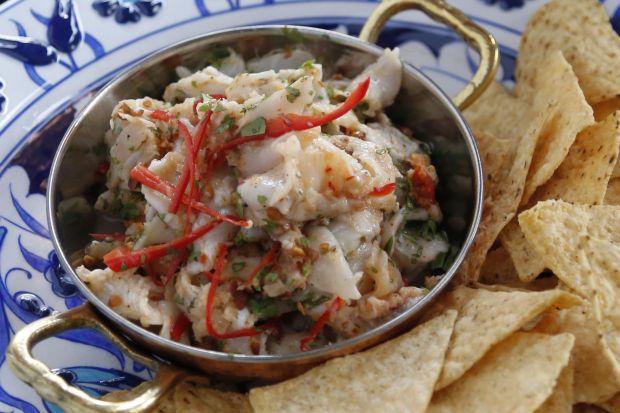Here are some of the best wines of the year.
AS is my custom, it’s time to share with you a list of wines that made the most lasting impression throughout the year. Let’s begin with the reds.
Complex Barbera from the Piedmonte
Many consider the Barbera grape to be inferior to the Nebbiolo grape, since the great Barolos and Barbarescos of Italy’s Piedmonte are made from Nebbiolo. In the Piedmonte, Barbera is usually quaffed – hence its nickname, the people’s wine.
These days, some Piedmonte producers are turning their attention to Barbera. Some of the best vineyards facing south that were reserved for Nebbiolo are now considered also good for Barbera, which is being farmed organically. Yields are restricted too, all in a quest for quality Barbera. Early this year, at the Asta del Barolo auction I encountered these Barberas.
Michele Chiarlo’s Barbera d’Asti Superiore “Le Orme” has been lauded by many critics as a “best value” Italian wine. It lived up to its reputation – fruity, fresh, light and elegant, yet with a touch of minerals and truffles. If Le Orme were the yang, the yin was evident in the Michele Chiarlo Barbera “La Court” Nizza (from south-facing vineyards), with its spicy plums and chocolate flavours.
Roche dei Manzoni, Barbera d’Alba and Sorito Mosconi are made with organic grapes taken off 70-year-old vines. They came across complex with meat and dark fruit aromas and a hint of spice. Yet another wine, the Azelia “Vigneto Punta” Barbera d’Alba, also made from old vines and aged in small barrels, showed a different character – with red fruit characters.
Equally delicious was Conterno Fantino’s Barbera d’Alba. This wine had dark fruit aromas, fine acids and tannins. Another Conterno Fantino wine, called “Mon Pra”, proved the accommodating nature of the Barbera grape. Blended with a 45% Nebbiolo and 10% Cabernet Sauvignon, Mon Pra turned out to be a modern-style wine – balanced, rich and with a sweet finish.
Asian wines
They are a curiosity and are never taken seriously. Whilst judging at the Cathay Pacific Hong Kong International Wine & Spirits Competition, I encountered a wine with excellent balance and good structure as well as true varietal character. I assumed it to be an Australian Shiraz. Unveiled, the wine turned out to be a wine of Hong Kong origin – a Shiraz from The 8th Estate Winery. Later, I found out that frozen fruit was flown in from Australia, and the juice was fermented into wine in Hong Kong. Other tasty Asian wines included the Chateau Mercian, Mariko Vineyard Meritage, from Japan and the Asoke Valley Winery’s “The Orient” Syrah, from Thailand, made by Nikki Lohitnavy, the country’s first female winemaker.
Spanish delight
I had always thought of Spanish reds as wines made from Tempranillo or Garnacha. Imagine my delight to find, whilst attending Fenavin, the Spanish Wine Fair, another red variety – Mencía. It is found only in the north-west – in the three seldom-heard-of zones of Valdeorras, Ribeira Sacra and Bierzo.
The grapes for Dominio do Bibei, Lalama, are taken off old vines growing on steep slopes at moderately high altitudes. With wild cherry with strawberry aromas and a hint of cigar, earth and dried flowers, and a beautiful structure, this wine just sang in my mouth.
Another wine, Martinez Yebra Vina Decanes Tres Racimos, was brimming over with intense flavours of forest fruits supported by good tannins. A Casar de Burbia Hombros, made from grapes growing at an altitude of 600m, had plenty of character with an intense nose of plums, flavours of coconut and tobacco. In contrast, Tebaida from the same producer showed curranty flavours allied with cola and sour plums because the grapes are grown at 700m above sea level. Hail, Spain’s re-discovered native varietal, Mencía!
German Pinot Noir
Few would expect red wines to be a German offering; after all, we know the country as a specialist of white wines. Even fewer would consider Germany to produce fine Pinot Noir. Yet, there is more than a handful of German producers who specialise in red wine. Almost all (90%) of producer Jean Stodden’s vineyards are planted with 90% Pinot Noir.
Hence, Jean Stodden’s Spaetburgunder Recher Herrenburg “Grosses Gewachs”, 2006, met all the expectations of a truly fine Pinot. It was spicy, with an elegant nose of lots of pure red fruits. It had a creamy texture, cherry and strawberry flavours with a hint of oak and dry finish. It spurred me on to explore two other excellent German Pinots.
The Weingut Friedrich Becker Pinot Noir seemed to encapsulate the best of both worlds. It had the bright cherry fruit of Pinots from the New World but came across dry and elegant like Burgundy with a touch of spice and meat for complexity. But it was the truly affordable Bernhard Huber Spaetburgunder “Junge Reben” Pinot Noir, 2008, that was so delicious, and I kept a mental note of its aromas and flavours – tangerine, crushed berries, stone fruit, orange peel, cherry a whiff of vanilla wafers, with a touch of barnyard.
Red Sancerre from France’s Loire Valley
Last but not least was the wine of Domaine Vacheron, Sancerre, Belles Dames, 2007. Sancerre is famous for its white wines made from Sauvignon Blanc but once in a while, Sancerre comes as a red wine – made from Pinot Noir. This wine, made biodynamically, impressed me with its refined, understated aromas. In the mouth, the wine had flavours of coffee, soy, small and black fruits, bon-bon and spice – all mingled together. The wine came across fresh yet with complexity.
Edwin Soon is a qualified oenologist and has run wine shops and worked as a winemaker in various countries. He now writes and teaches about wine around Asia.




